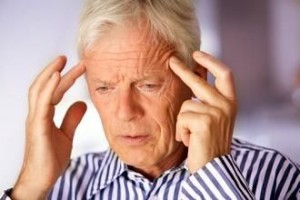 Stroke is a leading cause of death in Americans each year with over 130,000 lives lost to it. That’s why I’ve decided to talk to you about the FAST system of identifying a stroke in progress to try and save one of these lives. Here’s what you should know. . .
Stroke is a leading cause of death in Americans each year with over 130,000 lives lost to it. That’s why I’ve decided to talk to you about the FAST system of identifying a stroke in progress to try and save one of these lives. Here’s what you should know. . .
What Is a Stroke?
A stroke occurs when a blood vessel that supplies blood to the brain becomes blocked by a clot. This is known as an ischemic stroke. Another way a stroke can occur is from a blood vessel bursting and causing a hemorrhagic (bleeding) stroke. Often, smaller “warning” strokes, called TIA’s (transient ischemic attack), can occur several days before a larger stroke.
TIA’s can alert your doctor to the fact that medical intervention is necessary to prevent a larger, likely more damaging stroke, from occurring. Signs of a TIA are similar to a stroke, but are milder and occur for a much shorter period of time. The following are some common symptoms:
Signs of a Stroke
Strokes come on SUDDENLY and so do their tell-tale signs. Yet, some symptoms of an impending stroke may occur a few hours or days prior to a stroke occurring. If you notice any of these signs in yourself, or someone near you, seek medical attention quickly. They include:
- Numbness or weakness of face, arm, leg, especially on one side
- Trouble speaking or understanding what is being said
- Vision loss, blurriness, or visual field disturbance in one or both eyes
- Problem with balance, walking, falling down, lack of coordination
- Severe headache or dizziness
Now, keep in mind that the above symptoms do not always, automatically mean that a stroke has occurred or is about to occur. Some of these symptoms can be indicators of other medical conditions as well. The best way to identify a stroke is to know the National Stroke Association’s FAST system to help you quickly identify a stroke in progress.
If you, or someone around you, starts to exhibit the following signs don’t try to guess if it is a warning TIA or a full blown stroke, call 9-1-1 immediately. It could save someone’s life and/or lessen permanent disability.
The FAST Signs of Stroke
F: Ask the person to smile. Does their face droop to one side?
A: Ask the person to raise both arms. Does one arm drift downward?
S: Ask the person to repeat a simple phrase. For example: The tree fell down. Is their speech slurred or do they have trouble speaking, forming words?
T: Time – if you observe any of the above positive signs of stroke, call 9-1-1- immediately. Write down the time you first saw these symptoms. If specific clot-busting medication (tPA – Activase) is given within 3 hours, it can help reduce long-term, damaging effects and/or disability.
Know the Risk Factors
Certain medical conditions increase the risk for stroke occurring. They include:
- Hypertension
- High LDL (bad) cholesterol
- Smoker
- Drink heavily
- Other heart disease (especially atrial fibrillation, or irregular heartbeat)
- Sickle cell disease (African-Americans) – a blood disorder where clots can occur
How To Avoid a Stroke
My patients know I prefer to prevent conditions from occurring rather than try to treat them once they’ve happened. Strokes can also be prevented, and/or the damage/disability from them lessened. All it takes is a little effort in your lifestyle to guard against them. This includes:
- Quit smoking and stay away from second hand smoke
- Maintain a normal weight for normal blood pressure and blood sugar
- Exercise regularly to keep weight, blood pressure, blood sugar normal
- Drink half your weight in water each day. Dehydration can thicken blood which can clot
- Maintain healthy cholesterol levels with a diet of 0 trans fats, added Omega-3 fats
- Add lipid lowering medications if your doctor has recommended them
- Get a physical exam once a year, or sooner if symptoms warrant
I tell my patients never to second guess, or ignore, any symptoms in which their vision, speech, hearing, thinking, balance, ability to walk, changes – even if it seems subtle. Even if you call the EMS, or get yourself, or someone else, to an emergency room, and it turns out not to be a stroke or TIA, it’s better to be safe than sorry. Remember, TIME is the critical factor in recovering successfully from a stroke or TIA.
Stay Well,
Mark Rosenberg, M.D.
Natural Health News
Stroke Signs and Symptoms, http://www.heart.org/idc/groups/heart-public/@wcm/@hcm/documents/downloadable/ucm_300317.pdf
Stroke Facts and Statistics http://www.cdc.gov/stroke/facts.htm
image credit: buzzle.com
